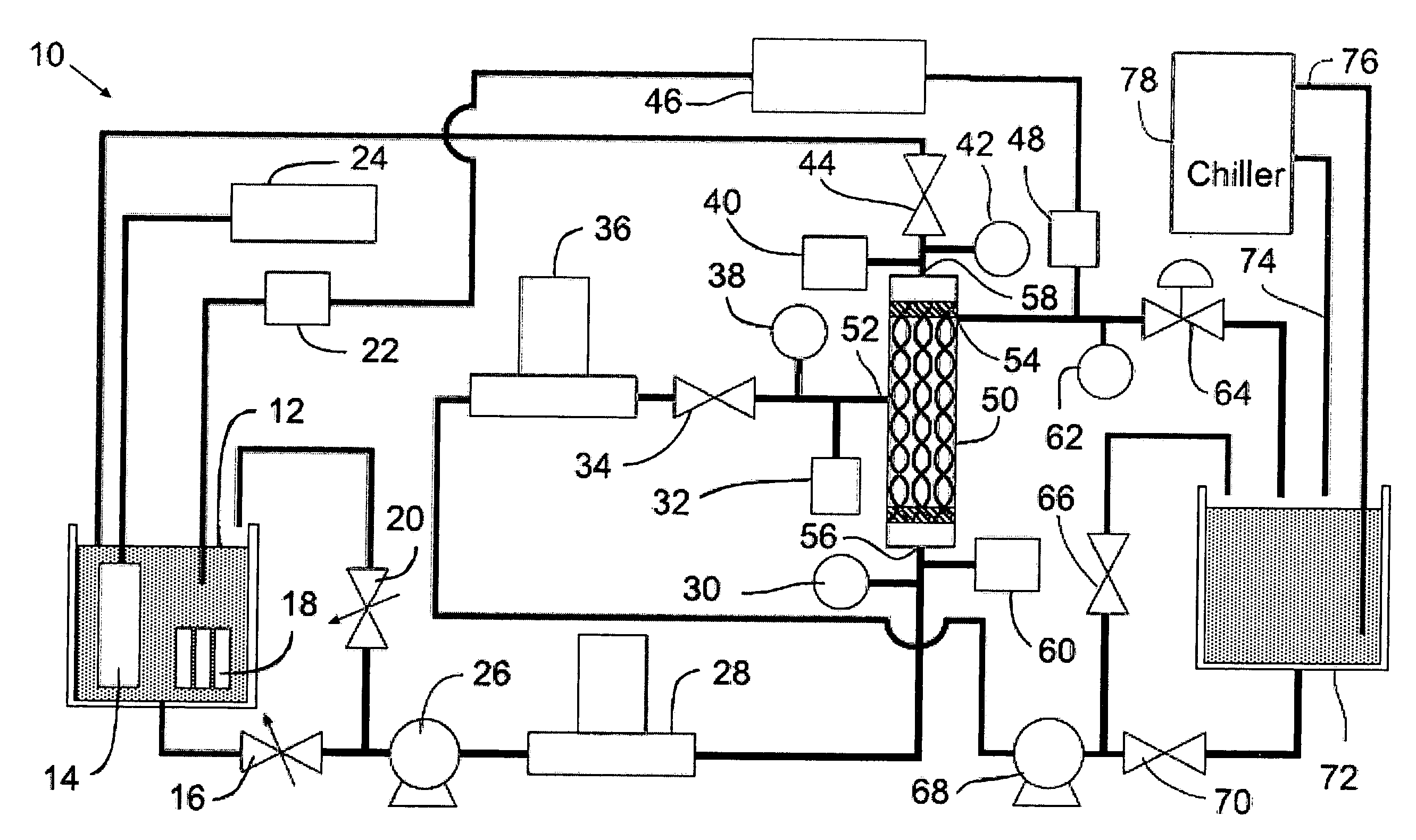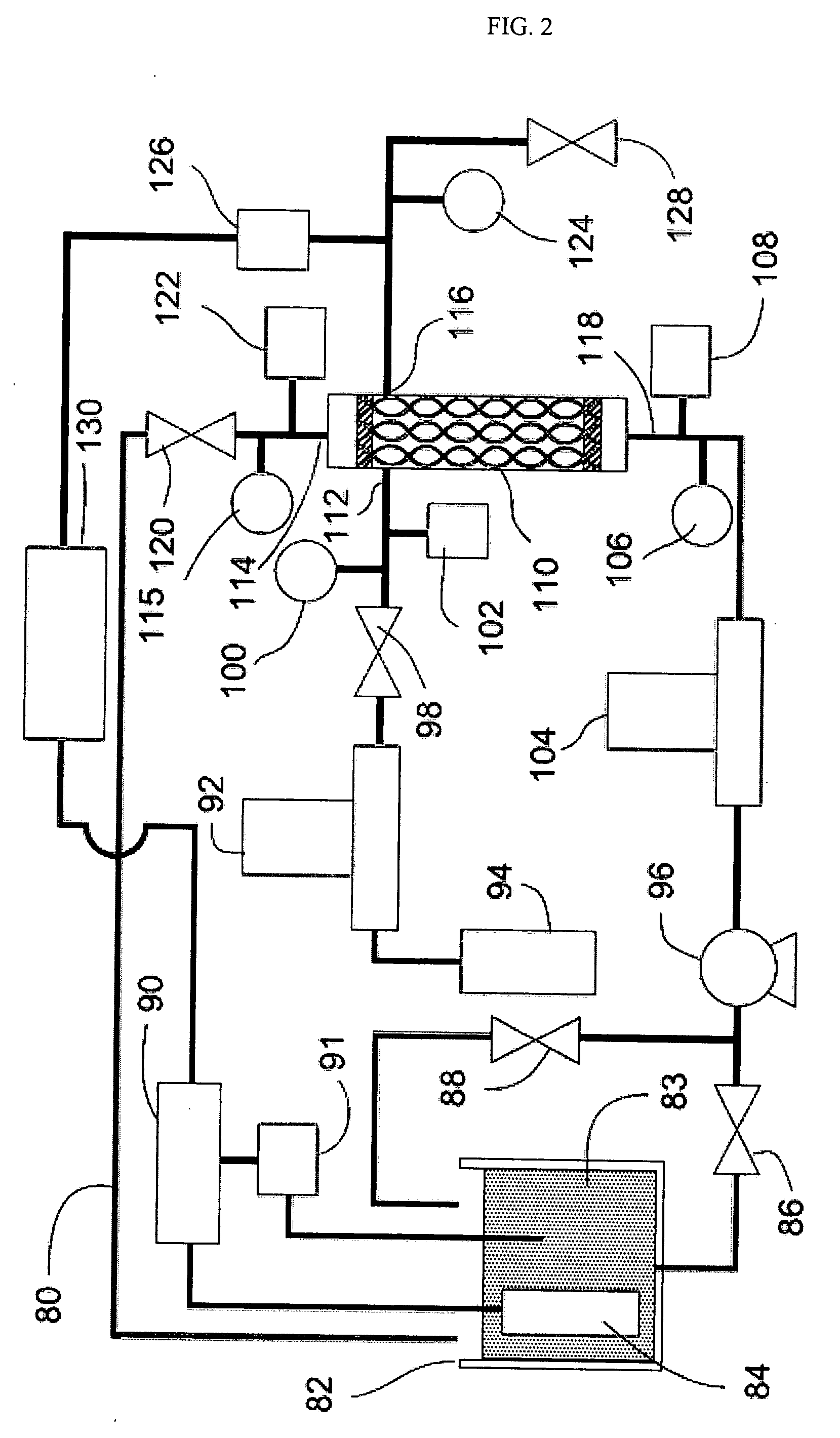Apparatus for conditioning the temperature of a fluid
a technology for conditioned fluids and apparatuses, applied in lighting and heating apparatus, process and machine control, instruments, etc., can solve the problems of corrosive nature of many liquids precluding the use of such a system, large volume of polymer heat exchange devices, and inability to meet the requirements of semiconductor process tools, etc., to achieve enhanced flow distribution, high heat transfer surface area, and high packing density
- Summary
- Abstract
- Description
- Claims
- Application Information
AI Technical Summary
Benefits of technology
Problems solved by technology
Method used
Image
Examples
example 1
[0041] Preformed MFA tube filaments with 0.047 inch inside diameter and 0.006 inch thick wall thickness were from Zeus Industrial Products Inc. Orangebury, S.C. Cord for potting were made by twisting the MFA filaments to obtain 12 turns per foot of strand. A single strand was wrapped around a metal frame 8 inches wide and 18 inched long. The frame and wrapped strand were annealed in an oven for 30 minutes at 150 degrees Celsius. About 75 cords measuring 18 inches in length were obtained from the rack after annealing. Cord from multiple racks are gathered to yield 310 cords and placed into a previously heat treated and MFA coated PFA tube measuring 16 inches in length. The inside diameter of the PFA was 2 inches and fluid fittings were bonded 2 inches from each end of the PFA tube. Each end of the device was potted using Hyflon® MFA 940 AX resin, obtained from Ausimont USA Inc. Thorofare, N.J., for about 40 hours at 275° C. Cool down of each end after 40 hours of potting was controll...
example 2
[0043] Preformed MFA tube filaments with 0.047 inch inside diameter and 0.006 inch thick wall thickness were from Zeus Industrial Products Inc. Orangebury, S.C. Cord for potting were made by twisting the MFA filaments to obtain 12 turns per foot of strand. A single strand was wrapped around a metal frame 8 inches wide and 18 inched long. The frame and wrapped strand were annealed in an oven for 30 minutes at 150 degrees Celsius. About 75 cord measuring 18 inches in length were obtained from the rack after annealing. Cord from multiple racks are gathered to yield 310 cords. They were placed into a previously heat treated and MFA coated PFA tube measuring 16 inches in length. The inside diameter of the tubes was 2 inches and fluid fittings were bonded 2 inches from each end of the PFA tube. Each end of the device was potted using Hyflon® MFA 940 AX resin, obtained from Ausimont USA Inc. Thorofare, N.J., for about 40 hours at 275° C. Cool down of each end after 40 hours of potting was ...
PUM
| Property | Measurement | Unit |
|---|---|---|
| thickness | aaaaa | aaaaa |
| volume | aaaaa | aaaaa |
| heat transfer surface area | aaaaa | aaaaa |
Abstract
Description
Claims
Application Information
 Login to View More
Login to View More - R&D
- Intellectual Property
- Life Sciences
- Materials
- Tech Scout
- Unparalleled Data Quality
- Higher Quality Content
- 60% Fewer Hallucinations
Browse by: Latest US Patents, China's latest patents, Technical Efficacy Thesaurus, Application Domain, Technology Topic, Popular Technical Reports.
© 2025 PatSnap. All rights reserved.Legal|Privacy policy|Modern Slavery Act Transparency Statement|Sitemap|About US| Contact US: help@patsnap.com



